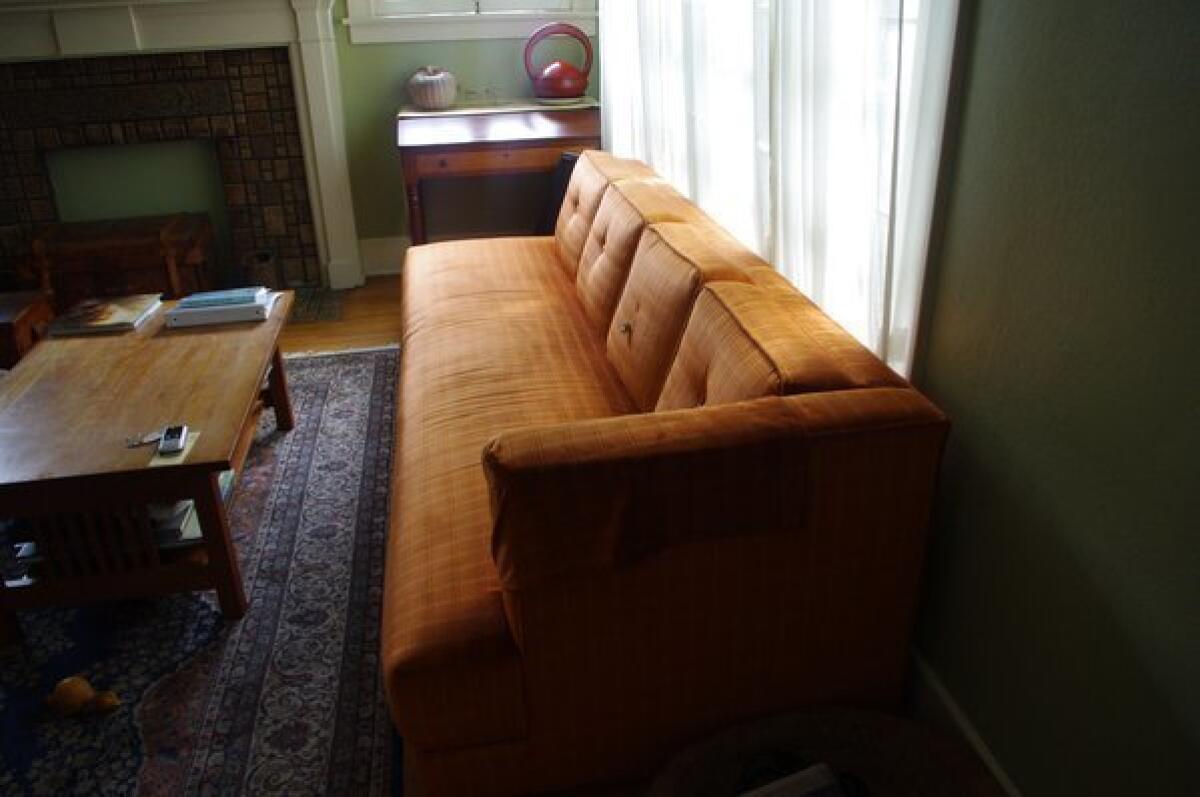Toxic flame retardants common in household couches

- Share via
The vast majority of couches tested as part of a new study contained chemical flame retardants, including toxic chemicals that have been linked to a variety of health problems.
Comparing sample results from older and newer couches, research published Wednesday in the journal Environmental Science & Technology indicates that the presence of flame retardants in furniture foam has increased in recent years.
Of 102 residential couches purchased in the United States from 1985 to 2010, 85% had been treated with chemical flame retardants. The chemical pentaBDE, which was phased out by its only U.S. manufacturer in 2004, was found in 17% of the samples. Chlorinated Tris (TDCPP), which replaced pentaBDE and is a suspected human carcinogen, was found in 41% of the couches, primarily in ones purchased since 2005.
PentaBDE belongs to a class of chemicals called polybrominated diphenylethers (PBDEs) that persist in the environment and accumulate in living organisms, where they have been linked to neurological disorders as well as liver and thyroid toxicity. Traces of PBDEs have been detected in human breast milk, fish, aquatic birds and elsewhere in the environment.
Firemaster 550, another retardant that contains toxic ingredients, was detected in 13 couches, most of them sold in the last seven years.
The chemicals leach out of furniture, enter the atmosphere and attach to dust particles.
“There are a lot more chemicals than we expected,” said Arlene Blum, coauthor of the study and executive director of the Green Science Policy Institute in Berkeley. Other authors were from Duke University’s Nicholas School of the Environment and Boston University’s School of Public Health.
The widespread use of flame retardants in furniture foam and baby products in the U.S. stems from a long-standing California standard intended to guard against the ignition of household furniture. Gov. Jerry Brown this year called for revision of the standard, which has been under attack as unnecessary and ineffective.
“Everybody has a pound or two of toxic chemicals in their couches that doesn’t have to be there,” said Blum, a leading critic of the standard.







